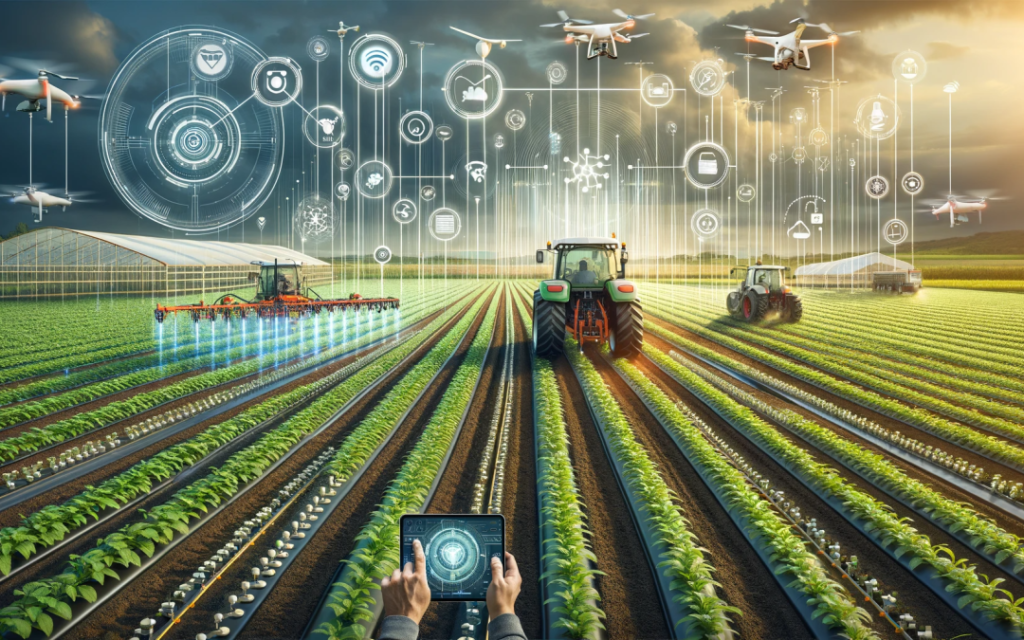Agriculture technology is rapidly transforming the world’s food production and distribution. This technology is improving agricultural productivity, environmental sustainability, and reducing food waste.
This includes precision farming technology that allows farmers to monitor soil conditions, weather conditions, and crop growth in real-time. It also includes remote imagery sensors, LPWAN connectivity hardware, and data analytics software.
Genetically Enhanced Crops
Genetically enhanced crops first appeared in the market in the mid-1990s with what seemed like a promising future. Engineered to be resistant to insect pests and herbicides, GM crop yields increased and lowered the need for chemical fertilizers, helping to improve soil quality. Today, GM crops are grown by 8.25 million farmers on 200 million acres in 17 countries. The majority of GM crop cultivation is in corn, soybeans, and cotton.
Unlike traditional plant breeding techniques, GM plants are engineered with specific DNA patterns. GM crops are usually designed to produce more per-acre crop yields, but scientists have also added vitamins and nutrients into some plants. Researchers at the Donald Danforth Plant Science Center have developed several foods, including grains enriched with vitamin E and vegetables that are fortified with folate, a nutrient known to reduce neural tube defects in newborns and to prevent cancer and cardiovascular disease in adults.
Before GM plants are allowed to enter the market, they undergo rigorous environmental impact and risk assessment by the agrobiotech companies that develop them and multiple government agencies. The United States Department of Agriculture (USDA), the Environmental Protection Agency, and the Food and Drug Administration each have their own responsibilities in regulating GM crops. USDA approves the field release of most GM crops, while EPA and FDA regulate those with pest or herbicide resistance traits.
Autonomous Farm Machinery
Autonomous farm machinery is a new type of technology that allows farmers to work the land without human intervention. It uses GPS field mapping to drive itself on a predetermined route, avoiding crops and obstacles along the way. This technology can reduce labor costs, save time and improve crop yields. It also helps farmers meet rising global demand for food, and is a cost-effective solution for meeting increasing water and fertilizer demands.
Driverless tractors are already available from some companies, including John Deere. However, the technology needs to be improved and adapted for use on farms. For example, it must be able to deal with electrical failures and other problems that are not easily detected by sensors. It must also be able to collect data from non-standard sources, such as monitoring weeds and pests.
Another challenge is liability, since agricultural machines must operate in public. One news report of a machine that runs over a pet or a child could lead to a huge public backlash and stall the widespread adoption of this technology. However, it is possible that autonomous equipment can be made safe enough to prevent such accidents. It can be programmed to recognize obstacles and avoid them, or it can be programmed to shut off the equipment if a pet or child is within its range of vision.
RFID
Agriculture is at a critical technological crossroads. To handle increasing demand and several disruptive trends successfully, the industry must adopt advanced connectivity. The benefits from such a move will be substantial—from higher yields and lower costs to greater resilience and digitization. In total, they could deliver more than $500 billion in value over the next decade.
One of the most crucial changes will be in labor efficiencies. Most farms, particularly those in less-developed regions, employ few outside workers and rely heavily on manual labor. The deployment of connectivity solutions will allow farmers to reclaim much of this work, freeing them up for other tasks. In Asia, for example, this will generate more than $40 billion in value by 2030.
Another major change will be in the way that data is used to inform decisions. For instance, the ability to monitor soil conditions on a farm in real time will enable the use of better fertilizers and pesticides, thus improving crop quality. Similarly, the ability to predict weather patterns will allow farmers to plan agricultural activities with greater accuracy.
A number of companies are working on robots that will help with harvesting and other labor-intensive tasks. A team at Harper Adams University, for example, has started a proof-of-concept experiment with a hectare of barley in which all the crop processing will be done by a robot. Meanwhile, a car-sized robot called Bonirob developed by researchers at Osnabruck University of Applied Sciences in Germany can measure various characteristics of the soil, such as its moisture content or nutrient density.
Blockchain
The use of technology to improve agricultural production has led to major changes in the industry. The invention of machines that help to plant and harvest crops made it possible for fewer people to work on farms. Today, agriculture is largely industrial in nature and controlled by huge corporations. This has increased the need for innovation in agriculture.
New agriculture technology can help farmers increase crop yields, utilize equipment more efficiently, and adopt sustainable agrifood-production methods. It can also address environmental concerns like water scarcity and climate change, while reducing the cost of inputs such as fertilizer and fuel.
Moreover, the agriculture industry can make better decisions by leveraging data analytics and artificial intelligence (AI). Agriculture 4.0, also known as digital farming, is a new environment that uses sensors, IoT, drones, satellites, and autonomous machinery to enable real-time information collection and analysis. This helps to optimize all processes within the farm, from field management to livestock breeding and genetics.
This technology can be used for a variety of purposes, from food safety to supply chain transparency. For example, blockchain can be used to track the origin of food products and create a marketplace with greater transparency for consumers. This can help to address societal demand for sustainability in supply chains and promote economic growth by meeting consumer expectations.

